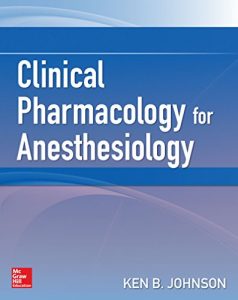Learn how to apply the core principles of pharmacology for safe, effective anesthesia practice
Presented in full color, and enhanced by more than 100 tables and 175 full-color illustrations, Clinical Pharmacology for Anesthesiology incorporates the latest research to characterize drug behavior at the point of care and offers a concise summary of what anesthesia care providers must know about the drugs they use in everyday practice.
Clinical Pharmacology for Anesthesiology utilizes a visual approach that translates complex mathematical expressions of drug performance into clear presentations designed to assist the practicing anesthesia care provider. Supported by published models, computer simulations are used throughout to illustrate drug concentrations, predictions of selected drug effects, and interactions between various classes of anesthetic drugs that result from various dosing regimens.
Features
- Applies clinical pharmacology principles to patient care, focusing on how anesthetic drugs interact with one another in regards to analgesia, sedation, and hypnosis.
- Delivers a concise overview of anesthetics and other drugs (diuretics, antiemetics, antiseizure medications, etc.) used in the perioperative environment
- Describes how patient covariates, such as body weight, blood loss, and age influence drug behavior
- Incorporates the use of computer simulations to visually present drug concentration and effects for selected anesthetic techniques in premedication, induction, maintenance, emergence, and sedation
- Includes simulations of sample anesthetic techniques for various challenging surgical procedures












